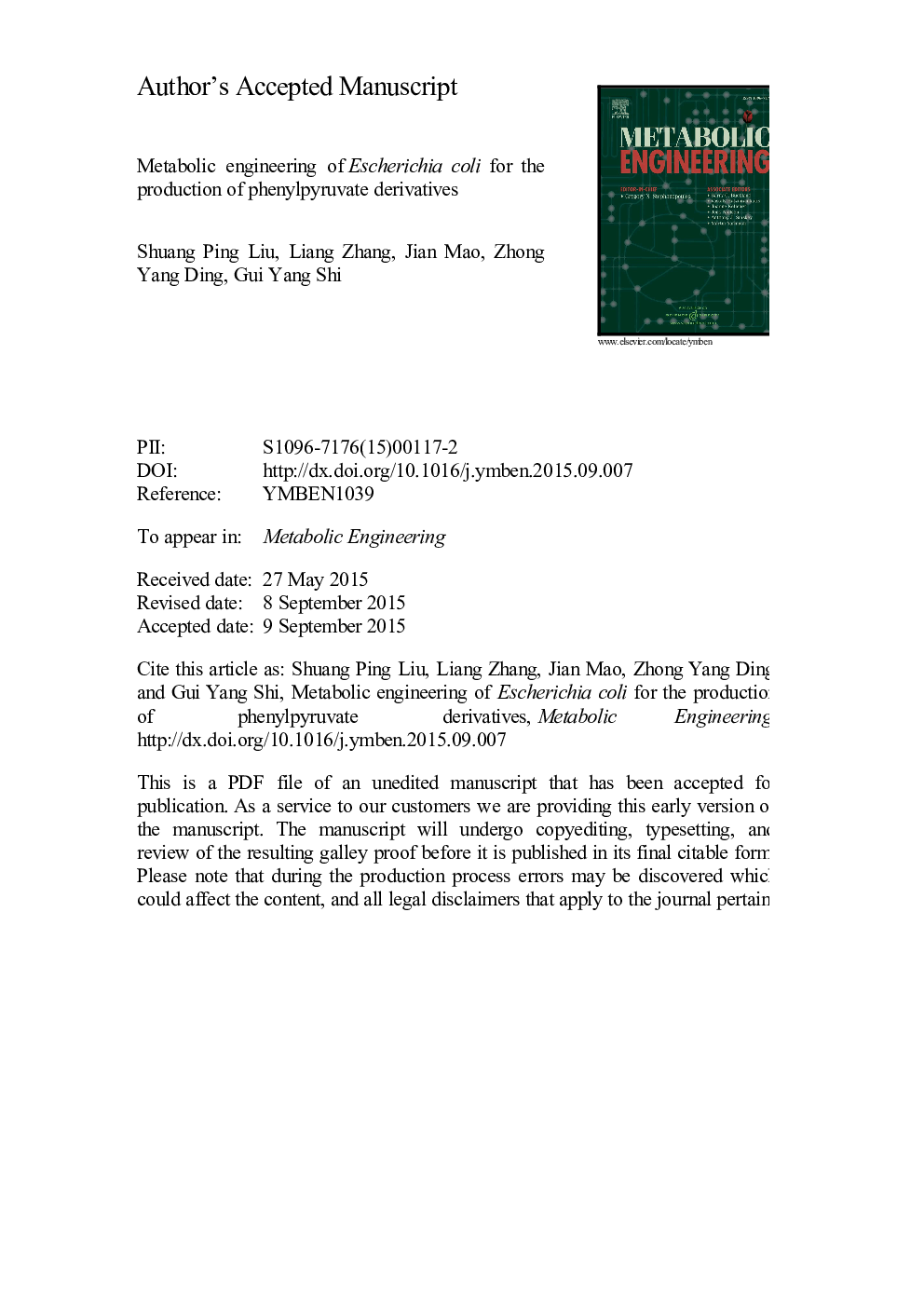| Article ID | Journal | Published Year | Pages | File Type |
|---|---|---|---|---|
| 6494326 | Metabolic Engineering | 2015 | 49 Pages |
Abstract
Phenylpyruvate derivatives (PPD), such as phenylpropanoids, dl-phenylglycine, dl-phenylalanine, and styrene, are biosynthesized using phenylpyruvate as the precursor. They are widely used in human health and nutrition products. Recently, metabolic engineering provides effective strategies to develop PPD producers. Based on phenylpyruvate-producing chassis, genetically defined PPD producers have been successfully constructed. In this work, the most recent information on genetics and on the molecular mechanisms regulating phenylpyruvate synthesis pathways in Escherichia coli are summarized, and the engineering strategies to construct the PPD producers are also discussed. The enzymes and pathways are proposed for PPD-producer constructions, and potential difficulties in strain construction are also identified and discussed. With respect to recent advances in synthetic biology, future strategies to construct efficiently producers are discussed.
Keywords
Related Topics
Physical Sciences and Engineering
Chemical Engineering
Bioengineering
Authors
Shuang Ping Liu, Liang Zhang, Jian Mao, Zhong Yang Ding, Gui Yang Shi,
